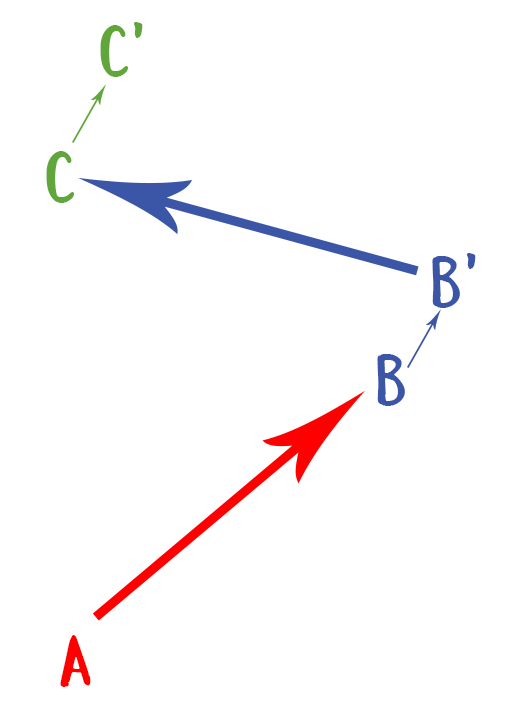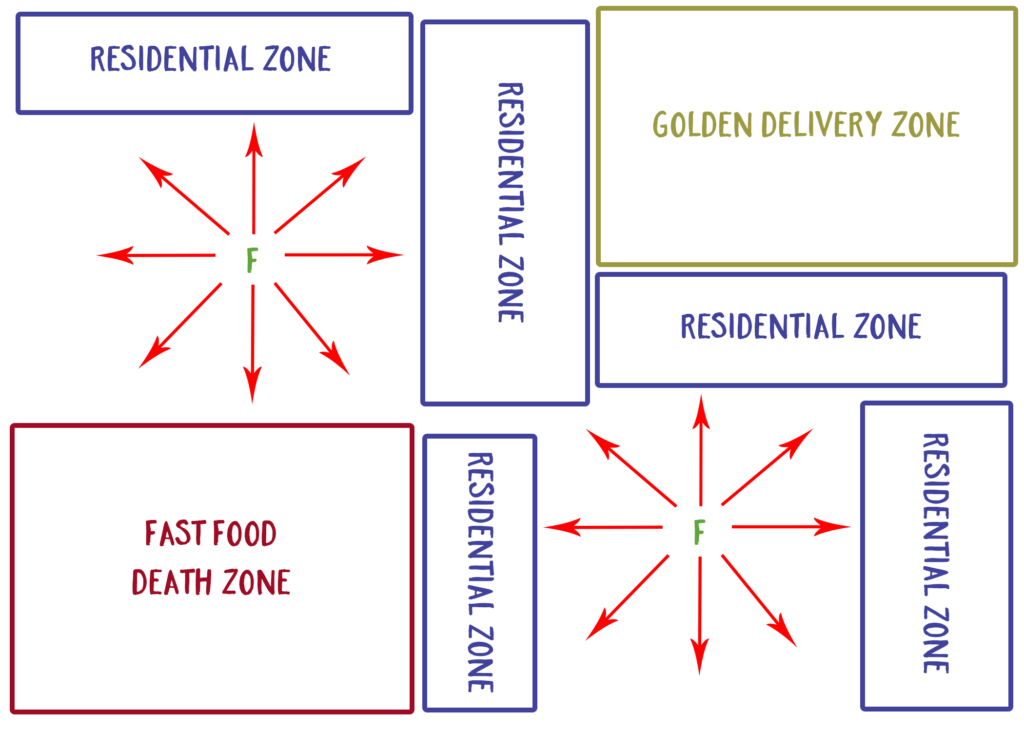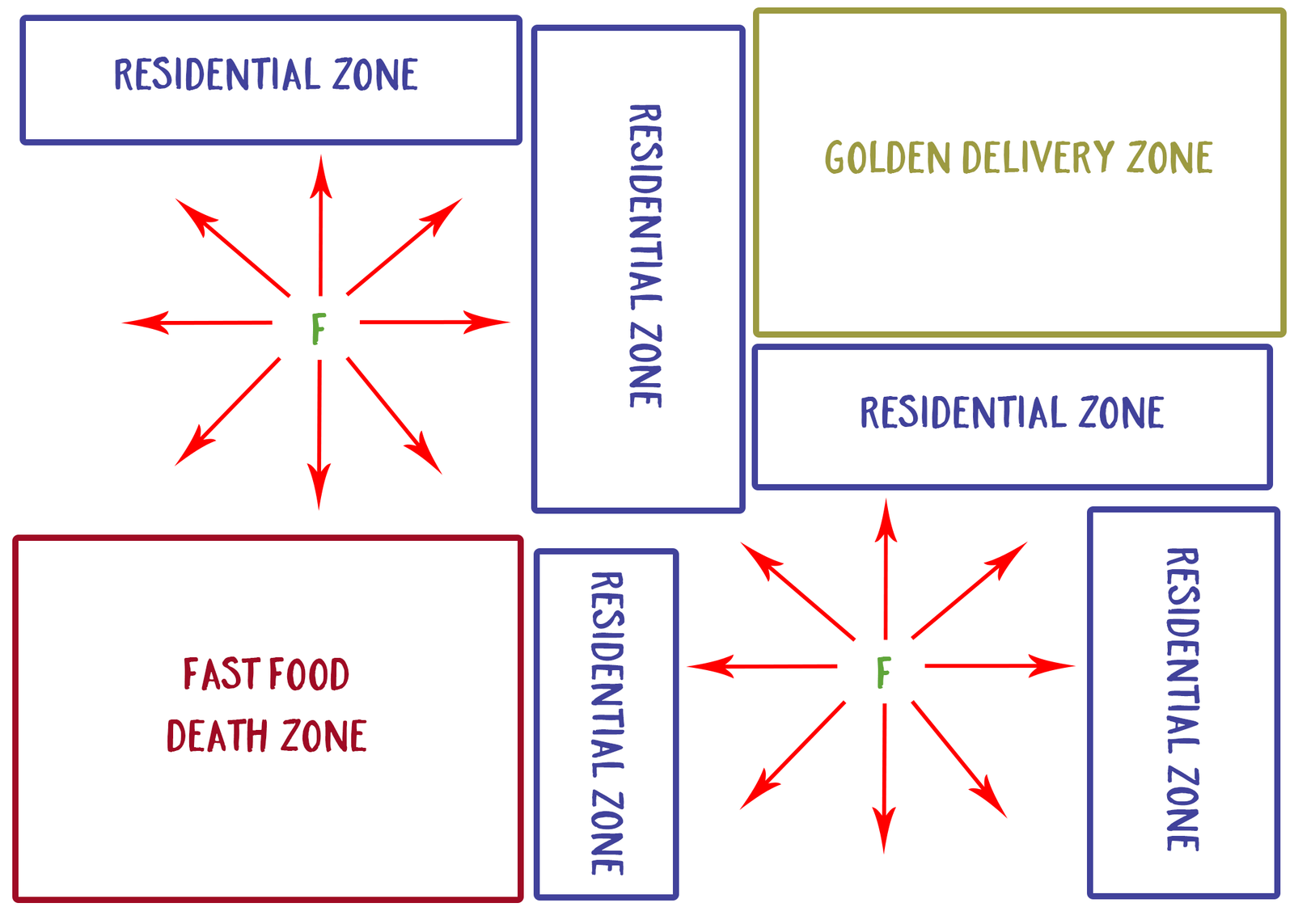Shortly, I’m going to teach you how to maximize your Uber Eats earnings, but first, you have to understand where I’m coming from.
I worked at a pizza restaurant once, delivering pizzas.
I wasn’t really fond of the job for two reasons.
The first was that it was a “look-busy” establishment. If it ever got slow, the owners would find work for the drivers to do, though, for some reason, the same logic didn’t apply to the cooks. In addition to the inane stuff, drivers were required to do the final prep on all of the dishes before they went out, as well as folding all of the pizza boxes, which wasn’t a big deal, and washing all of the dirty dishes, which definitely was. I really hate cleaning dishes.
Which leads to the second complaint: all of the time I spent doing these things was time I wasn’t spending out driving.
My base salary was $6/hour plus tips. On a good day, including tips, that usually meant earning around $15/hour, and on a poor day, it was closer to 12/hour, which for the lesser number is about 1 delivery per hour and for the higher number is 2 or 2.5 an hour.
When you’re working for tips, you’re playing more of a volume game than a quality game. You can’t control how much people tip, and many people tip delivery drivers poorly. One of my coworkers made 30 cents on a 40-minute drive with an order that was worth $45.
What really frustrated me was all that time spent doing these other tasks at $6/hour, which prevented me from going out and earning tips. I estimated that given the clientele of this particular restaurant that I could conceivably do 3-5 trips an hour if I wasn’t doing other tasks, conceivably making as much as $30/hour. It’s hard to stand there washing dishes knowing that you’re losing around half of what you could be making due to the way the establishment staffs itself, that is, hiring too many drivers and using them as inefficient sub-minimum wage employees in the back who offset that low pay with the occasional delivery run.
So, after quitting that job, and another job, and looking for easy ways to bring in some income, I found Uber Delivery, which is a food delivery service, which was nice because I wasn’t turning my car into a taxi. And, after starting, I was pleased to find that I was making better than $12/hour, no dishwashing required. After driving for a few weeks, I revised my strategy so that I now regularly make better than $20/hour. When it comes to maximizing my Uber Eats earnings, I would say that isn’t bad.
But, before I explain how to do that, I want to explain the two fundamental problems with Uber Delivery.
The first issue is how pay is calculated. Your delivery fee starts with a base of $1 for picking up the food, $2 for dropping it off, and then an additional fee based on the time spent driving between the restaurant and the drop-off point, and the distance between the two.
The second issue is the food-housing divide.
Let’s look at this imaginary map.

This is what my dream route would look like. Starting at restaurant A, You drive to house B, make the delivery, then get an order for the nearby restaurant B’, which you deliver to apartment complex C, before getting an order for the nearby restaurant C’.
The nice thing about this is that it maximizes the distance you drive between restaurants and delivery points, which maximizes your Uber Eats earnings while minimizing your time and distance between delivery points and new restaurants, which is just pure cost.

But, this never happens, and it has a lot to do with, of all things, zoning laws. Take a look at the map below.
There are areas, labeled F on the map that have a lot of restaurants in them, and most of the deliveries, or the red arrows, are out of the commercial zones with restaurants in them into residential areas with houses or apartments.
Uber seems to heavily favor proximity when handing out driving jobs. Consequently, if you want to make more money, you need to be in places with a lot of food nearby, and if you’re in a residential area, you need to leave it and get back to a place with food.
So, if you want to make $20/hour, or more, you have to choose the areas you work wisely. In my experience, I get about two orders in an hour, which means you need to be earning about $10 on every delivery to hit that mark.
The first thing you need to know is that fast food pays poorly. Since your pay has nothing to do with the value of the meal, there’s no inherent reason it should do poorly. The problem is that there’s so many McDonald’s, Taco Buenos, etc. in the area and people (sensibly) order from the closest one, so you miss out on the biggest potential paydays: time and distance. You also get bumped back to the bottom of the list of available drivers, meaning that $4.25 you just made has put you way off the hourly pace. Don’t go to areas that have a lot of fast food and little of anything else if you want to maximize your Uber Eats earnings.
Instead, go to areas that have a lot of casual sit-down restaurants. Think Italian, Asian, Barbeque, Burger-type places.
Since there’s less of them the average distance between them and their delivery point goes up, which means you make more off the time and distance portion of your pay. And while tipping is somewhat random, these types of meals tend to go to middle-aged people, who tend to tip better. If you can land two of these types of delivery in an hour, you will be very satisfied with your pay.1
Additionally, when you work matters.
Remember that you’re delivering food. The hot times for delivering food are from 11-1 for lunch, and from 5-8 for dinner. I’ve tried to stay out from 1-5 to try to turn the job into a full time one, but often you only get a handful of deliveries across those four hours, which really drags down your average hourly Uber Eats earnings on the day.
Additionally, Uber uses what it calls “boosts” to bring drivers out at certain times in certain places. Once you install the app, you’ll be able to look up when they will be. A boost applies a multiplier to your total fare, so if your order would have normally made you $10, and there’s a 1.2x boost in the area you are working, you’ll instead make $12. I recommended heading out to work anytime Uber has set a 1.3x multiplier or greater. Your Uber eats earnings will go up a lot if you work during these times.
Finally, a word of advice. If you sit in your car for more than half an hour without getting an order, go home. I’ve had very little luck getting any orders if that much time passes without an order. That’s the point at which you should call it quits after the lunch and dinner rushes if you haven’t already stopped.
Hopefully, I’ve given you some stuff to think about. While I don’t your Uber Eats earnings will be enough to qualify as a full-time job, I do think that it could provide some substantial side-income for people that have the time to do the work.
And, maybe I’ve convinced you that this is something that you want to do. If that is the case, and if you think this article has helped you, there’s something you can do for me that will cost you nothing. When you create an account please put my personal referral code, codyk3827ue, down as the referrer. After you complete a certain number of trips, Uber will send me a little money as thanks for sending you their way.
If you liked this article, you may like:
Arcology
How to Boycott
Was Prohibition a Terrible Idea?
- On the above map I labeled the kinds of areas that place these orders as the “Golden Delivery Zone,” which can be characterized as a place with a lot of residential areas, but few sit-down restaurants. And while it may have fast-food joints that offer you deliveries, you want to get back to the place you started. You’ll ultimately make more that way. In my experience, these tend to be newer developments.



